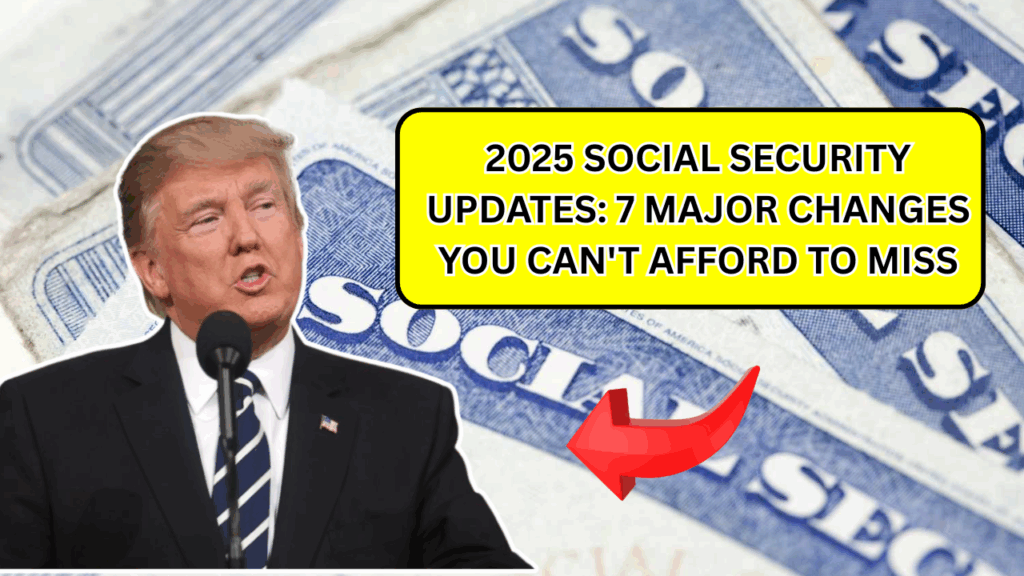Social Security is one of the most essential programs for millions of Americans, providing a vital income for retirees, the disabled, and survivors of deceased workers. However, changes to the program are coming in 2025, and understanding these adjustments is crucial for those who rely on Social Security. From cost-of-living adjustments (COLA) to income limits and even changes in tax rates, 2025 promises to bring significant shifts. Here’s what you need to know about the new Social Security updates and how they could affect your benefits.
1. A 2.5% Cost-of-Living Adjustment (COLA) Increase
One of the biggest changes coming in 2025 is the 2.5% increase in Social Security benefits. This annual adjustment, designed to help benefits keep pace with inflation, will impact millions of recipients.
The average monthly benefit for retired workers will rise from $1,927 to $1,976 starting in January 2025. This COLA increase is meant to help beneficiaries maintain their purchasing power despite rising costs. While the 2.5% hike is lower than the previous year’s increase of 5.9%, it will still provide essential support for those living on fixed incomes.
For more details on how the COLA increase works, check out the official SSA COLA page.
2. Higher Earnings Limit Before Full Retirement Age
If you’re planning on working while receiving Social Security benefits before reaching your full retirement age (FRA), you may be in luck. In 2025, the earnings limit will increase to $23,400. This means that individuals who are under the FRA can earn up to this amount without having any of their Social Security benefits withheld.
However, if you earn more than the limit, $1 will be deducted from your benefits for every $2 you make above this threshold. This change represents an increase from the 2024 earnings limit of $22,320.
3. Increased Maximum Taxable Earnings
Another change in 2025 is the increase in the maximum taxable earnings for Social Security. The new maximum will be $176,100. This means that higher-income earners will contribute more to the Social Security program.
For those earning above this threshold, income beyond $176,100 will not be subject to Social Security taxes. While this affects a small percentage of workers, it is an important step toward strengthening the program’s long-term solvency.
4. Full Retirement Age (FRA) Changes
In 2025, the Full Retirement Age (FRA) will continue to increase. For those born in 1959, the FRA will be 66 years and 10 months. Individuals born in 1960 or later will reach FRA at 67. This is important because if you claim Social Security before your FRA, your monthly benefits will be permanently reduced.
However, delaying your claim beyond FRA can increase your monthly benefit by up to 8% per year until you reach 70. If you’re considering waiting to claim your benefits, you should weigh the pros and cons of delaying.

5. Identity Verification for Benefit Applications
Starting in April 2025, the Social Security Administration (SSA) will require in-person identity verification for individuals who cannot use the online application process for retirement, survivor, or family benefits. This change is being made to enhance security and reduce fraud.
While this will make the application process slightly more cumbersome for some individuals, it’s a necessary step in safeguarding the integrity of the Social Security system. If you’re planning to apply for benefits, be sure to check if you need to complete this step.
6. The Social Security Fairness Act
A key legislative change affecting Social Security in 2025 is the passage of the Social Security Fairness Act. Signed into law in January 2025, this law eliminates benefit reductions for individuals who are entitled to public pensions from work not covered by Social Security.
The new law will provide over 3 million retirees with fairer Social Security benefits. Previously, these individuals saw a reduction in their Social Security benefits due to their public pension income, but the new law aims to restore those funds.
7. Project 2025: Medicare and Social Security Changes
While most of the Social Security updates focus on immediate benefits and earnings, some proposals could affect beneficiaries in the future. One of these proposals is Project 2025, which aims to overhaul Medicare and Social Security in ways that could affect long-term beneficiaries.
The proposed changes include making Medicare Advantage the default option and repealing certain drug price caps. Though these changes are primarily focused on Medicare, they could also affect Social Security beneficiaries, especially when it comes to healthcare costs.
Conclusion
The changes coming to Social Security in 2025 may seem complex, but understanding them can help you maximize your benefits and avoid surprises. Whether you’re nearing retirement or currently receiving Social Security, these updates will affect how much you receive and how you can manage your income. Be sure to stay informed and plan accordingly to make the most of these adjustments.
For additional details and updates on Social Security, you can always visit the official Social Security





